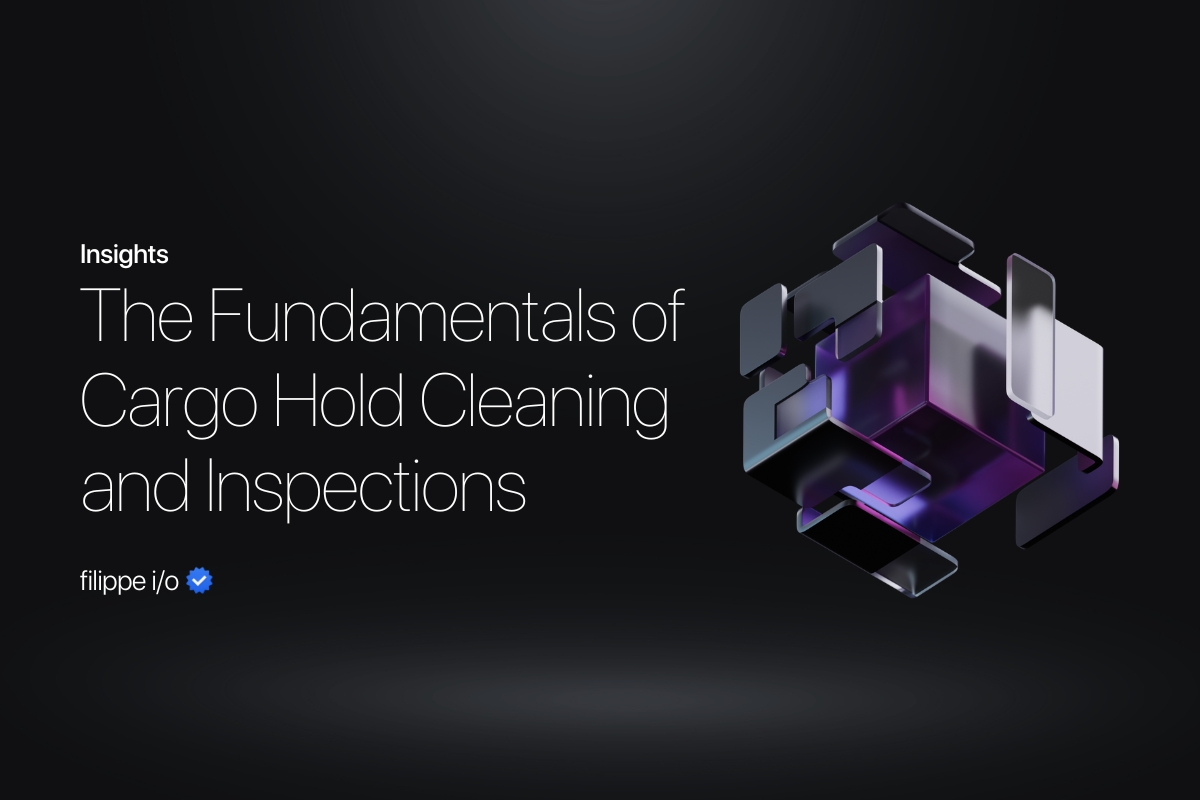The Fundamentals of Cargo Hold Cleaning and Inspections

When we talk about cargo hold cleaning and inspections, it’s not just about cleaning the space; it’s about ensuring that the entire operation stands up to the highest standards of compliance, safety, and operational excellence. For me, this process is a cornerstone of maritime operations—one that directly impacts cargo suitability, aligns with Britannia P&I standards, and enforces robust loss prevention policies.
Let me break down why this process is critical, how it should be approached, and the meticulous steps required to do it right.
The Foundation: Why Proper Cleaning Matters
Cargo hold cleaning is much more than a cosmetic requirement. It directly affects the integrity of the cargo, the reputation of the operation, and even the financial standing of the stakeholders. A cargo hold that isn’t cleaned thoroughly risks contaminating the cargo, leading to claims, financial losses, and potentially strained client relationships.
The key to proper cleaning starts with high-pressure equipment, and I mean machines with a minimum of 500 bar of power. This level of pressure is essential to remove residues, embedded contaminants, and debris from previous cargo. However, pressure alone isn’t enough—chemical cleaning agents are often necessary to dissolve stubborn residues, particularly from oily or corrosive cargoes.
But here’s the thing: using chemicals comes with a responsibility. After application, a thorough washing is required to ensure that no traces of the chemicals remain. Any residue left behind can be as harmful as the dirt it was meant to remove, potentially causing damage to the next cargo.
Tackling Stains: The Reality of Black and White Stains
Now, let’s address a common point of contention: black stains and white stains. These are persistent marks that no amount of cleaning can remove. They’re often embedded deep into the surface, and the only way to address them is through scraping and repainting. It’s important to set clear expectations with clients and stakeholders—documenting these stains with photos and videos before, during, and after cleaning is non-negotiable. Transparency here is key to avoiding disputes during inspections.
Rust: The Silent Contaminant
Rust isn’t just an aesthetic problem; it’s a contamination risk. For example, imagine loading grain or steel coils into a hold with untreated rust. The potential for contamination or damage is enormous, leading to claims that could have been prevented. That’s why every rusted area must be scraped, treated, and painted. This isn’t just about compliance—it’s about protecting the cargo, the vessel, and the reputation of the operation.
The Importance of Pre-Inspections
An official inspection determines whether a hold is “suitable” for cargo, but relying solely on this step is a mistake. A pre-inspection is your chance to catch potential issues early and address them proactively.
During pre-inspections, I focus on:
- Identifying residues or chemical traces left after cleaning.
- Assessing rusted areas and ensuring they’ve been treated and painted appropriately.
- Checking for stains or damages that require further work.
This step isn’t just about ticking boxes—it’s about ensuring the hold will pass the official inspection without delays or disputes. And just as important as the inspection itself is the documentation that comes with it. Photos and videos are your evidence, your proof of diligence, and your safeguard against future claims.
Aligning with Britannia P&I and Loss Prevention Policies
Compliance isn’t optional—it’s a critical part of every operation. Cleaning and inspections must align with Britannia P&I standards, which prioritize safety, cargo integrity, and risk mitigation.
How Compliance is Enforced:
-
Thorough Cleaning: Every hold must meet or exceed the cleanliness standards set by the cargo type. This ensures that no contamination occurs and eliminates risks that could lead to claims.
-
Documentation: Detailed reports, supported by high-quality photos and videos, are essential. These documents demonstrate that all necessary steps have been taken and provide a clear record of the hold’s condition at every stage.
-
Loss Prevention: By adhering to rigorous cleaning and inspection protocols, we actively enforce loss prevention policies. This isn’t just about avoiding claims—it’s about building trust with clients and ensuring smooth operations.
The Role of Technology and Expertise
Cleaning and inspections are hands-on tasks, but technology plays a critical role in enhancing efficiency and precision. From using high-pressure machines to employing advanced chemical solutions, every tool must be carefully chosen and applied. But no technology can replace expertise. The human element—trained professionals who understand the nuances of cleaning, inspecting, and documenting—is what ensures success.
Setting the Stage for Success
A clean and inspected cargo hold isn’t just a requirement; it’s the foundation for a successful voyage. By taking these steps seriously, we:
- Protect the integrity of the cargo.
- Ensure compliance with industry standards.
- Build confidence with clients, surveyors, and stakeholders.
At the end of the day, every detail matters. From removing residues to addressing rust, documenting processes, and aligning with P&I policies, the work we do sets the tone for the operation. It’s not just about cleaning—it’s about setting the stage for success, reliability, and trust in maritime operations.